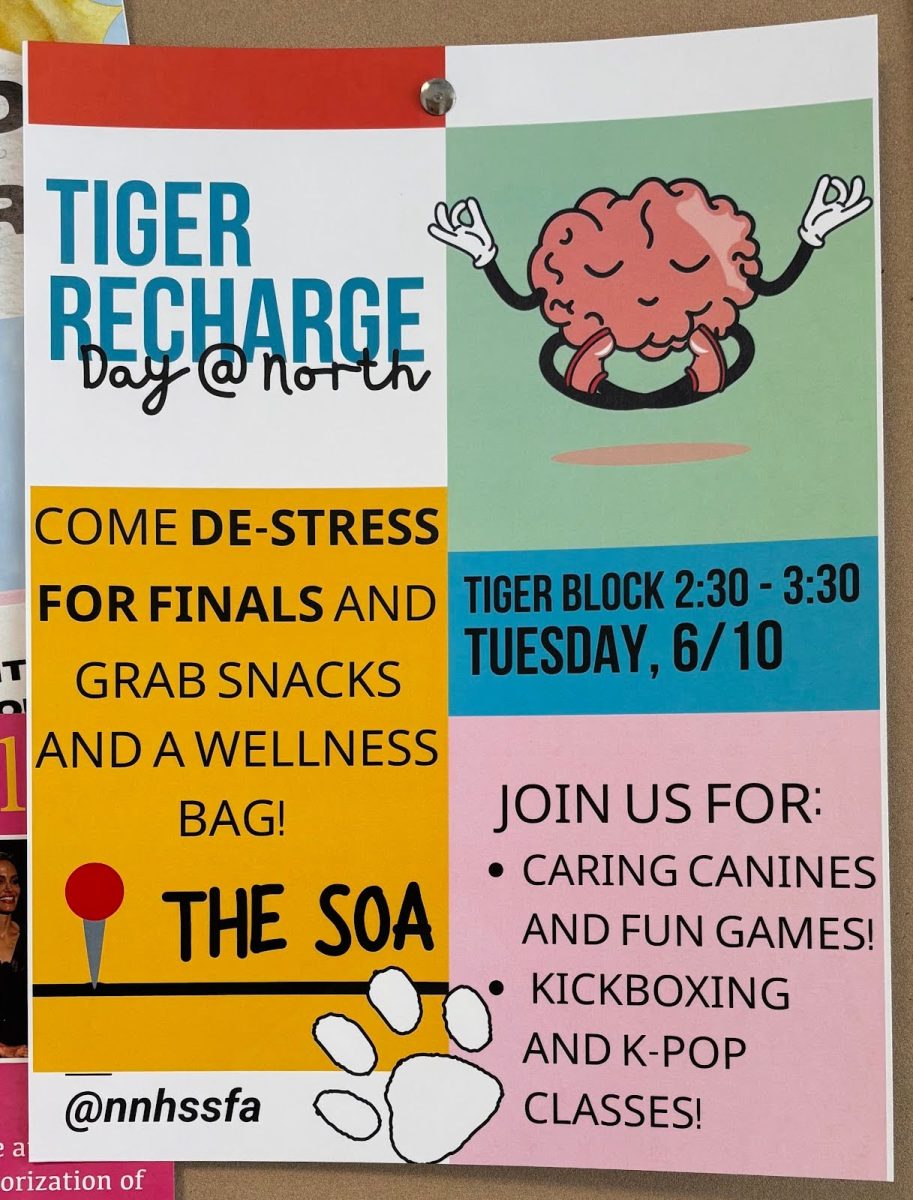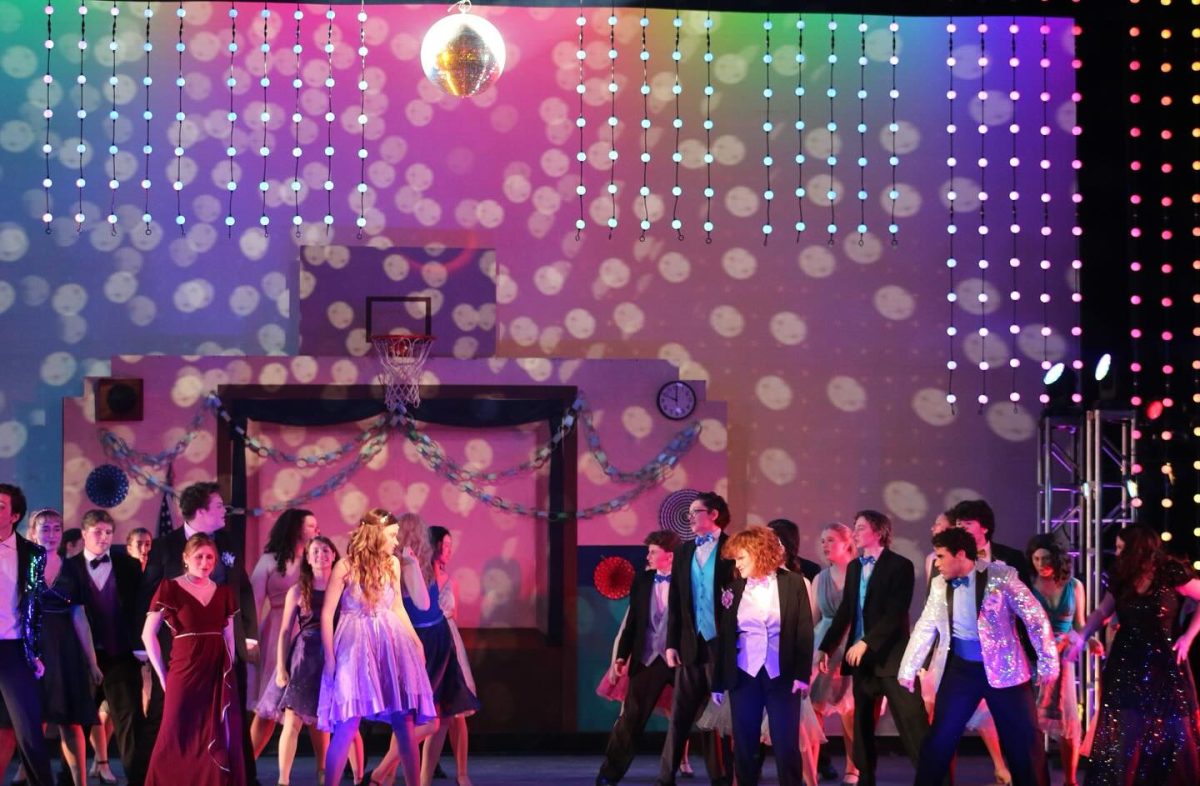by Malini Gandhi
“White. A blank page or canvas.” A man in a dark suit with a canvas in hand stands on a stage flooded with brilliant white light, speaking magical words like “balance” and “harmony.” With a whimsical smile he conjures trees and color from a palate of nothingness.
As his eyes brighten and his imagination turns to reality, a windswept park of pale summer colors emerges from the background, beginning the touching musical, “Sunday in the Park with George,” with subtle beauty.
How can we sit in front of a blank canvas and sift through the shallow lies and gossip that define human existence to find the beauty? And how can we do all of this in a world that does not understand us, where the people we love smile sadly and move on because we are stuck in our canvas and our work?
“Sunday in the Park with George,” a heartfelt tale with soft humor that was performed May 26 through May 29 in the auditorium, told this story of the sometimes painful, yet always beautiful, process of creation with striking originality. Drawing upon powerful acting and a stunning set the musical captures what it means to be an artist.
Directed by seniors Skylar Fox and David Gore, the play is centered on the French artist Georges Seurat’s iconic painting “Sunday Afternoon on the Island of La Grande Jatte.” The first act follows the life of Georges Seurat himself as he attempts to create his masterpiece.
Played by senior Edan Laniado, George is an honest, kind-hearted man, caught up in his world of color and creation. Laniado did an incredible job capturing George’s tender, absent-minded love for “finishing a hat” and “mapping out a sky.” His eyes constantly drifted to an unknown image or brightened as he declared “more blue.”
Yet George’s obsession with his work leads him to live in another world, a cold isolation that hurts his model and lover Dot, played by senior Kelly McIntyre. In the first scene, George, enveloped in his work, indifferently tells her to “stand still” in the hot sun as he paints her. Dejected, Dot bitterly sings the number “Sunday in the Park with George,” with McIntyre’s forceful voice proclaiming, “Why do you always get to sit in the shade while I have to stand in the sun? Hello, George?”
Yet Dot’s love for the reserved, thoughtful artist is also evident, for in between sharp proclamations of “Not even a nod, as if I were trees,” McIntyre sings in a soft, resounding voice, “I love your eyes, George, I love your painting…”
Meanwhile, the audience is introduced to the beautiful and ugly truths of human existence through the quirky characters that wander through the park. Garbed in colorful, intricate costumes created by senior Anna Gargas to match the painting, the park-goers represent an unconventional community; their dialogues, though brief, shine with acting talent and display fully realized characters.

Two gossiping girls portrayed by sophomores Eliza Burr and Anna Nemetz fight over attention from a soldier, played by senior Sam Melnick, while a bitter boatman played by senior John MacGaffey chases a young girl, played by sophomore Nora Elghazzawi, away from his dog. In other instances, these shallow coverings open to reveal the vulnerable humans inside: George’s nutty mother, played by sophomore Katie Wu, proves to be a frail old woman frightened of change.
Perhaps the most touching demonstration of these sad truths that dictate our lives is when Dot, finding herself increasingly cut off from George, leaves him and runs off with Louis the baker, played by freshman Ezra Dulit-Greenberg. George is enveloped in sadness but goes on with his work, adding more blue and creating more skies, and when Dot tells him she is leaving for America and shows him the child she says is his, he scarcely looks up from his canvas.
The poignant relationships and humorous chemistry between the park-goers was accentuated by an impressive, ever-shifting set designed by junior Aaron Siegal. Perhaps to reflect the wandering, creative tangents of an artist, the set did not remain grounded in traditional, realistic scenery but instead added elements of fantasy and quirky transitions. In one instance, George decided he despised a tree and it promptly flew off the set, while in a transition between the park and a scene with two art critics, the park-goers literally jumped inside a giant picture frame.
The combination of pale colors and flowing dialogue gave the first act a nostalgic feeling.
During the second act, the audience suddenly finds themselves more than one hundred years in the future as a new story emerges: George’s great-grandson, a young, nervous artist also named George and also portrayed by Laniado, finds himself losing sight of his passion as he becomes increasingly caught up in the world of critics.
While his grandmother Marie, an old, spunky woman in a blue turtleneck and a wheelchair played by McIntyre, speaks of “children and art” as being the most important aspects of life, George is too busy trying to impress others as he introduces his latest work at an art gallery.
This is displayed in the fastsong “Putting It Together,” where George wheels out cardboard figures of himself to speak to critics and admirers, leaving a fake, friendly George to constantly smile in his place.
Though the second act recapitulated some of the same themes, the characters were not as richly developed as in the first act. The beautiful finale, in which George wanders back to the park and is visited by the memories of park-goers encouraging him to move on, ended the musical full circle.
Touched with soft yet profound creativity, “Sunday in the Park with George” was an incredible performance that captured the power of art and allowed audience members to reflect upon themselves.








































